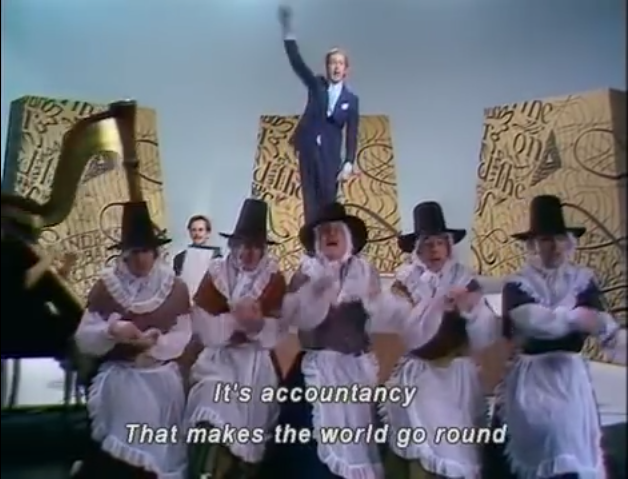What is an authentic text?
0 Replies
In linguistics and education, an “authentic text” is a text written for any purpose other than teaching/learning about language.
The word “authentic” doesn’t have its usual meaning in this context, nor its pejorative opposite “inauthentic”. It’s not a value-judgement.
The opposite of an authentic text is a text written for the purpose of language-teaching. This is a valid reason to write a text.
Authentic texts thus aren’t superior to language-teaching texts, they just serve a different purpose.
Authentic texts in language teaching
Authentic texts became an Important Thing in English language-teaching (and probably the teaching of other languages) because people who had learnt English from textbooks were arriving in English-speaking countries expecting taxi drivers to say, “What is your destination, please?” only to find they said alarming things like, “I’ll just whack your stuff in the back and then we can hit the frog and toad, where to?” Understandably, learners complained that their teachers had not taught them enough about how English is really used by native speakers.
Introducing authentic texts to the classroom was one way to bridge this divide, and make sure learners didn’t assume that being able to conjugate English verbs, name household objects and ask “where is the train station?” made them top-notch English-speakers.
When I taught English at a Mexican university two decades ago, we all had to use authentic texts in lessons, as well as our purpose-built language-teaching materials. Our students had limited access to native English speakers or their texts (the internet was in its infancy), so authentic texts helped give them more of a sense of how English is really used.
I was thus always scrounging for English newspaper and magazine articles, ads, postcards, letters and emails (email was new and exciting) to use in class. Each month we watched a film in English, my students loved Strictly Ballroom. I used Monty Python’s “Accountancy Shanty” and “The Money Song” as warmup texts for Business English, though sadly we didn’t then have access to the Youtube version, which looks like this:

Being the only native English speaker at our campus, I mostly taught advanced students, who weren’t too freaked out by texts containing language content, structures and/or usage above their level. My colleagues teaching beginners had a harder time meeting the authentic materials requirement without their students complaining the work was too hard.
Most students didn’t seem to care whether a text was authentic or not, as long as it was interesting, the tasks were pitched at the right level, and they learnt something about English.
Authentic texts and the Simple View of Reading
My Mexican students could read even quite difficult authentic texts aloud reasonably well, because the alphabets of Spanish and English are very similar. They found English spelling maddening, and often put the emPHAsis on the wrong syllABle, but I could understand what they were saying when they read aloud. However, they often couldn’t.
Audio or video authentic texts tended to be even harder for them, because spoken language is invisible and transient, while written language is visible and permanent, plus a lot of Latin-origin words are spelt the same in English and Spanish (animal, brutal, capital, doctor etc).
In Simple View of Reading terms, my students were thus often hyperlexic. Their knowledge of the English writing system outstripped their English listening comprehension. It was their listening comprehension, not their decoding, that made understanding authentic English printed texts hard.
English-speaking beginning and struggling readers with age-appropriate spoken language skills have the opposite problem. Their listening comprehension is an area of relative strength, but they haven’t learnt much about our writing system.
Far from lacking exposure to authentic texts in English, young English-speaking children starting at an English-speaking school are surrounded by them all day long. By definition, as native speakers, every conversation they have is an authentic oral text. Most of the printed authentic texts to which they have access are too hard for them to decode, since they don’t stick to short words with simple spellings. Adults thus sensibly read these texts aloud to children: signs, cookbooks, catalogues, websites, birthday cards, descriptions in museums, emails from Grandpa, quality children’s literature. Anything of interest that they can’t yet read themselves.
The main motivation for using authentic texts in foreign language teaching is thus not relevant to beginning and struggling readers. They don’t lack access to authentic texts. What they too often lack is access to well-designed pedagogical texts about how our writing system works.
Neither repetitive/predictable nor decodable texts are authentic texts
Both “levelled” predictable/repetitive books and decodable books are written for the purposes of teaching children to read.
Neither type of text is an authentic text, written to entertain, inform, share an important idea, sell a product, document an experience or warm the cockles of anyone’s heart.
The main difference between them is that decodable texts are fit for the purpose of teaching all children how to read, including kids with weak phonemic awareness, while predictable/repetitive texts confuse and mislead many kids into thinking reading is about memorising and guessing.
Kids often appear to read these books, when actually they are remembering the sentence frame repeated on each page (e.g. “I can see a…” or “Bugs like…”), and guessing the rest from the picture.
“Hooray!”, adults say, “great reading!”, but reading involves identifying words accurately. If you write the words from a repetitive/predictable book on cards and present them in random order, you’ll find that many children who seemed to be able to read these words in a predictable/repetitive book actually can’t read many at all.
Instead of breaking words down into sounds and their associated spellings and storing them efficiently in phonological, orthographic and semantic memory, repetitive/predictable texts (and their close relative, rote-memorisation of high-frequency wordlists) encourage kids to try to memorise words visually. They fail because visual memory is not how we store words. The kids who remember these words are actually breaking them down and storing them correctly, whether they’re being explicitly taught to do this or not.
Beginning and struggling readers need fit-for-purpose texts
Decodable texts are fit for the important purpose of teaching all beginners and strugglers to read words accurately, by systematically and sequentially focussing their attention on the relationship between the sounds and meaningful parts of spoken words and the letters/spelling patterns on the page.
Once they’ve nailed enough of the patterns, kids often start reading authentic texts – signs, labels, etc – without needing any encouragement to do so, suggesting they’re starting to teach themselves to read, as per the Self-Teaching Hypothesis.
As neuroscientist Stanislas Dehaene writes in his book Reading in the Brain:
“Every child is unique… but when it comes to reading, all have roughly the same brain that imposes the same constraints and the same learning sequence… Reading instruction … must aim to lay down an efficient neuronal hierarchy, so that a child can recognise letters and graphemes and easily turn them into speech sounds. All other essential aspects of the literate mind – the mastery of spelling, the richness of vocabulary, the nuances of meaning, and the pleasures of literature – depend on this crucial step. There is no point in describing the delights of reading to children if they are not provided with the means to get there.”



Leave a Reply